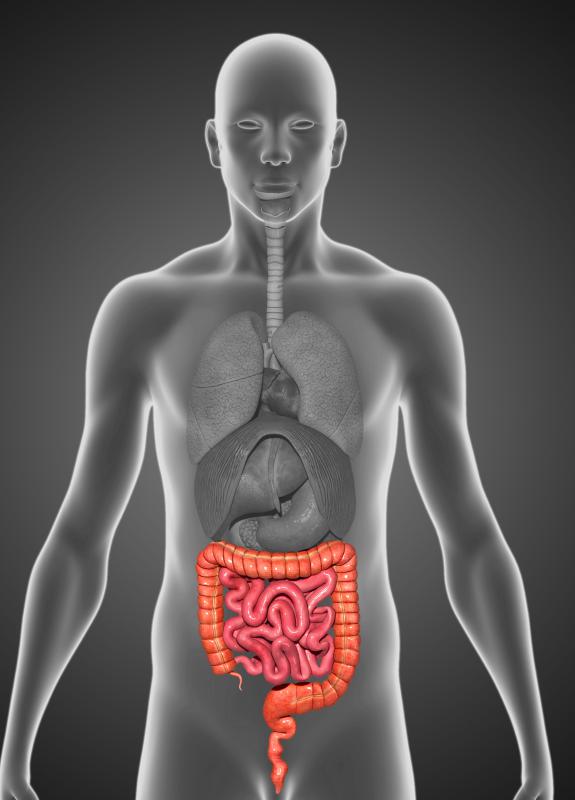At TheHealthBoard, we're committed to delivering accurate, trustworthy information. Our expert-authored content is rigorously fact-checked and sourced from credible authorities. Discover how we uphold the highest standards in providing you with reliable knowledge.
What Is the Path of the Digestive System?
The digestive system involves a series of organs that function in cooperation of the process of breaking down food into molecules that the body either uses or disposes of. The path of the digestive system begins at the mouth where food is inserted and ends at the anus where waste is expelled. In between, are other organs, each with their own role to play in the digestive process.
Once food enters the mouth and is chewed, it enters the pharynx, which leads to the esophagus. In the path of the digestive system, the esophagus is a tube-like organ that acts as a path for food to make its way to the stomach. Food is moved through the esophagus by peristalsis muscles and kept lubricated by mucus secreted in the lining of the esophagus. The beginning and end of the esophagus contain sphincter muscles that help food enter from the pharynx and exit into the stomach.

The stomach is a significant organ in the digestive system and the initial location of digestion. The stomach secretes digestive juices, which contain hydrochloric acid that kills bacteria and prepares protein for breakdown by pepsin enzymes. The acid in digestive juices is so strong that the stomach must also produce a mucus lining that keeps it from digesting itself. Once the food has been partially digested, it continues down the path of the digestive system to the small intestine.

The small intestine is comprised of three sections: the duodenum, jejunum, and ileum. The small intestine measures an astounding average of about six meters (19.6 feet) in length and is where the majority of enzymatic digestion takes place. Organs such as the liver, pancreas, and gall bladder secrete chemicals into the small intestine that also help the body digest carbohydrates and fats. When food is ready to leave the small intestine and enter the large intestine, it passes through the ileocecal valve.

The large intestine, also called the colon, plays a role in digestion by reabsorbing water and aids in the final absorption of nutrients. Once reaching the large intestine, stomach contents that have not been digested, along with food molecules that have not been used by the body, become waste. This waste is known as fecal matter and is stored in the rectum, which is essentially the end of the large intestine. Waste is then expelled through the anus during defecation, a bodily process controlled by both the involuntary and voluntary sphincter.

It takes an average of 24 to 48 hours for food to complete the entire journey in the path of the digestive system. Bacteria, viruses and excessive amounts of non-nutritive foods can alter the functioning of the digestive system. Imbalances in the production of digestive chemicals can also interfere with digestive functions and may speed up or slow down waste removal.
AS FEATURED ON:
AS FEATURED ON:














Discussion Comments
The stomach is an amazing organ. I find it interesting that is able to keep a balance between the strong acidic juices needed for digestion and the mucus lining needed to protect the organ from its own secretions.
Drentel - I hope you are not disappointed, but the colon is actually not as long as the small intestine. It is called the large intestine not because of its length, but rather because of its diameter, which is a couple inches more than the diameter of the small intestines.
The colon is about 5 feet in length. When talking about length, it's no small intestine, but five feet seems long too, considering the space it occupies. Plus when you add the two organs you get a total of about 25 feet of intestines.
Is it just me or is anyone else blown away by the length of the small intestine? I cannot believe that the small intestine measures over nineteen and a half feet and it can fit in such a small area. I remember learning that in health class when I was in grade school, but I had forgotten. It still boggles my mind.
Does anyone know the length of the colon?
Post your comments